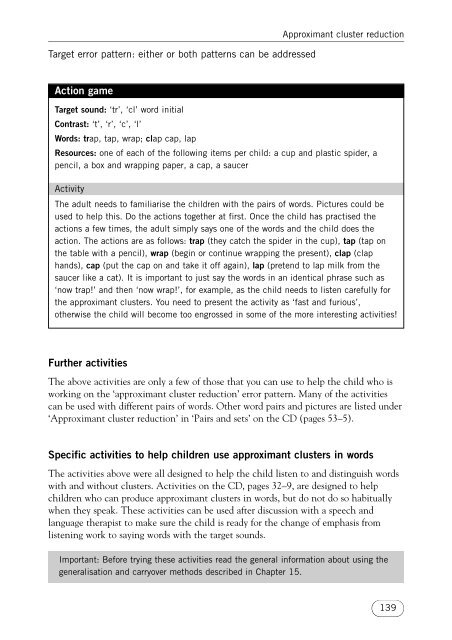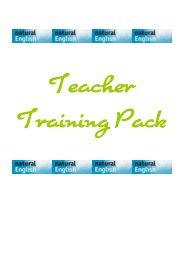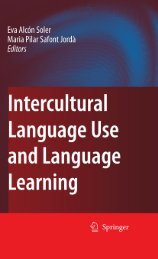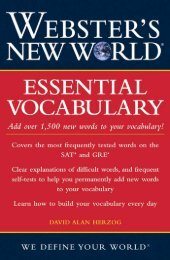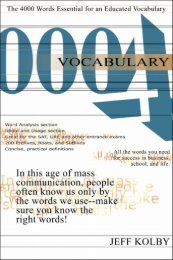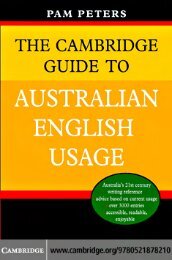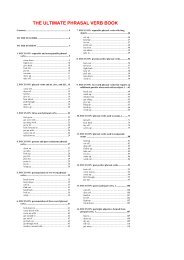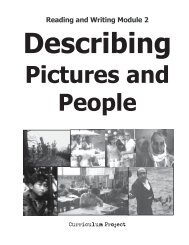Developing Speech and Language Skills - Noel's ESL eBook Library
Developing Speech and Language Skills - Noel's ESL eBook Library
Developing Speech and Language Skills - Noel's ESL eBook Library
Create successful ePaper yourself
Turn your PDF publications into a flip-book with our unique Google optimized e-Paper software.
Target error pattern: either or both patterns can be addressedApproximant cluster reductionAction gameTarget sound: ‘tr’, ‘cl’ word initialContrast: ‘t’, ‘r’, ‘c’, ‘l’Words: trap, tap, wrap; clap cap, lapResources: one of each of the following items per child: a cup <strong>and</strong> plastic spider, apencil, a box <strong>and</strong> wrapping paper, a cap, a saucerActivityThe adult needs to familiarise the children with the pairs of words. Pictures could beused to help this. Do the actions together at first. Once the child has practised theactions a few times, the adult simply says one of the words <strong>and</strong> the child does theaction. The actions are as follows: trap (they catch the spider in the cup), tap (tap onthe table with a pencil), wrap (begin or continue wrapping the present), clap (claph<strong>and</strong>s), cap (put the cap on <strong>and</strong> take it off again), lap (pretend to lap milk from thesaucer like a cat). It is important to just say the words in an identical phrase such as‘now trap!’ <strong>and</strong> then ‘now wrap!’, for example, as the child needs to listen carefully forthe approximant clusters. You need to present the activity as ‘fast <strong>and</strong> furious’,otherwise the child will become too engrossed in some of the more interesting activities!Further activitiesThe above activities are only a few of those that you can use to help the child who isworking on the ‘approximant cluster reduction’ error pattern. Many of the activitiescan be used with different pairs of words. Other word pairs <strong>and</strong> pictures are listed under‘Approximant cluster reduction’ in ‘Pairs <strong>and</strong> sets’ on the CD (pages 53–5).Specific activities to help children use approximant clusters in wordsThe activities above were all designed to help the child listen to <strong>and</strong> distinguish wordswith <strong>and</strong> without clusters. Activities on the CD, pages 32–9, are designed to helpchildren who can produce approximant clusters in words, but do not do so habituallywhen they speak. These activities can be used after discussion with a speech <strong>and</strong>language therapist to make sure the child is ready for the change of emphasis fromlistening work to saying words with the target sounds.Important: Before trying these activities read the general information about using thegeneralisation <strong>and</strong> carryover methods described in Chapter 15.139


